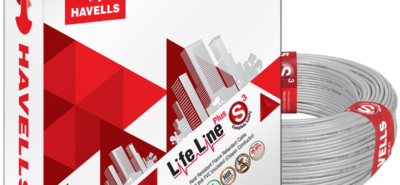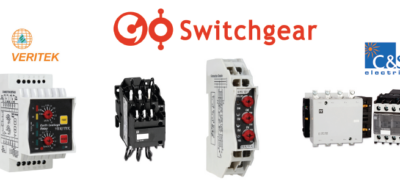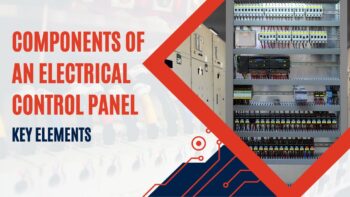Energy Management 101: A Beginner’s Guide for Factory Owners
If you’re a factory owner, you already understand that energy consumption is one of your most significant expenses. But it’s more than just an item on your budget. An effective factory energy management system can drastically reduce these costs, improve operational efficiency, and make your factory more environmentally friendly. In short, it’s an essential strategy for both profitability and sustainability.
Here is a beginner’s guide for effective energy management in factories:
Understanding Your Energy Consumption: The First Step in Energy Management

Before getting to guide energy management, it’s essential to get a detailed understanding of your factory’s energy consumption patterns. “You can’t manage what you don’t measure,” goes the saying, and it applies perfectly to energy management. Here’s how you can go about it:
Conduct a Facility Walkthrough
Start by conducting a comprehensive walkthrough of your entire factory. This first-hand observation is crucial to identify high-energy-consuming sectors and equipment. During this walkthrough, focus on the following:
- Heavy Machinery: Machines like CNC mills, injection molding machines, and compressors often consume the most power. Note down the types of heavy machinery in use.
- HVAC Systems: Heating, Ventilation, and Air Conditioning systems are generally among the top energy consumers. Understand their efficiency ratings and operational hours.
- Lighting: While individual lights consume little power, the cumulative effect across a large factory can be significant. Check if energy-efficient bulbs are in use and the lighting is optimized for different areas.
- Office Equipment: Computers, printers, and other electronic devices also add to the energy bill. They may not be the biggest consumers, but their long hours of operation can add up.
Gather Energy Ratings and Operational Data
After identifying the different equipment and sectors that use energy, the next step is understanding how much energy they consume. For this:
- Energy Ratings: Many pieces of equipment come with energy meters or documentation. Gather this data to get a ballpark figure of each equipment’s energy efficiency.
- Operational Timings: It’s not just the energy rating but also the duration for which equipment is operational that matters. Document the operational hours of each piece of equipment and sector.
- Utility Bills: Past utility bills can provide excellent baseline data. Examine them to understand your factory’s seasonal energy consumption patterns.
Analyze Collected Data
With all the information in hand, you can now get a clearer picture of your factory’s energy footprint:
- Energy Hotspots: Identify which equipment or sectors consume disproportionately high energy.
- Inefficiencies: Some machines might use more energy than necessary for their work, signaling an opportunity for efficiency improvements.
- Idle Consumption: Note any equipment that consumes energy even when not used actively. Standby modes in many machines can be energy-intensive.
Once you understand where and how energy is consumed in your factory, you can develop a targeted energy management system factory plan. The collected data is the foundation for making informed decisions, setting realistic goals, and implementing changes that yield significant savings.
Setting up an Energy Audit: Get a Professional Opinion

Conducting an energy audit is like a health check-up for your factory’s energy usage. Professionals in this field have the expertise and tools to evaluate your factory from top to bottom, focusing on several key areas:
- HVAC Systems: How efficient is your heating, ventilation, and air conditioning?
- Machinery: Are your machines energy-efficient, or are they power hogs?
- Lighting: Could energy-efficient bulbs and smart systems cut your costs?
- Insulation: Is your factory well-insulated to prevent energy loss?
The audit will yield a comprehensive report outlining inefficiencies and suggesting corrective measures. This energy management guide will help you make informed decisions, whether it’s small fixes like sealing leaks or significant investments like upgrading machinery.
Investing in Energy-Efficient Machinery: The Long-Term Savings

Older machines break down more frequently and consume a lot more energy. Investing in modern, energy-efficient machines can bring about multiple benefits:
- Reduced Energy Bills: New machines often perform better and consume less energy.
- Increased Efficiency: Modern machinery can speed up processes, increasing output.
- Tax Incentives: Many governments encourage using energy-efficient machines by offering tax breaks.
Though the initial outlay can be steep, the long-term savings in energy costs often make this investment worthwhile. Always weigh the upfront costs against the projected long-term benefits.
Optimizing HVAC Systems: Don’t Overlook the Basics

Any factory’s heating, ventilation, and air conditioning (HVAC) are big energy consumers. Simple upgrades and best practices can result in significant energy savings:
- Smart Thermostats: These adjust temperatures based on usage patterns.
- Regular Maintenance: Ensures the system runs efficiently.
- Upgraded Insulation: Reduces the need for heating and cooling.
Importance of Employee Training: Every Little Helps

Your energy-saving measures will only work if your employees help implement them:
- Awareness Programs: Educate staff about the importance of energy conservation.
- Best Practices: Teach simple actions like turning off idle machines.
- Incentive Programs: Reward employees for taking energy-saving actions.
Renewable Energy Options: Future-Proof Your Energy Needs

Adopting renewable energy can be a game-changer:
- Lower Bills: After the initial setup, operating costs are often low.
- Eco-Friendly: Reduces your carbon footprint.
- Government Incentives: Grants and tax breaks can offset initial costs.
Monitoring and Reporting: Keep Track of Your Efforts
To know if your energy management strategy is effective, you need data:
- Real-Time Tracking: Use software tools that offer real-time insights.
- Monthly Reports: Regularly review data to measure the effectiveness of your changes.
- Trend Analysis: Understanding patterns helps in future planning.
Setting Realistic Goals: Aim for Achievable Targets
It’s vital to have measurable objectives:
Percentage Reduction: Aim for a specific percentage reduction in energy use.
Cost-Savings Goals: Set a dollar amount you plan to save.
Regular Review: Constantly check progress against goals and adjust strategies as needed.
By setting achievable targets, you can measure your successes more effectively, making necessary adjustments to improve your energy monitoring and management system continually.
Legal Considerations and Incentives: Stay Informed and Compliant

Being energy-efficient is not just about saving money or reducing your environmental impact. It often involves adhering to legal standards and regulations that are in place to promote responsible energy consumption.
Failing to meet these standards can result in severe financial penalties, tarnish your company’s reputation, and even lead to operational shutdowns in extreme cases. Conversely, compliance with energy efficiency laws can qualify you for tax benefits, grants, and other financial incentives.
Types of Legal Requirements
Here’s a breakdown of some common types of legal requirements related to energy efficiency that you might encounter:
Emission Limits: Many countries impose limits on greenhouse gas emissions, requiring factories to implement cleaner technologies or face penalties.
Energy Ratings: Some jurisdictions require industrial equipment to meet specific energy-efficiency standards. This could affect your choice of machinery and even the lighting fixtures you use.
Reporting and Disclosures: Many laws require regular reporting on energy use and greenhouse gas emissions. Failure to accurately report this information can result in fines and other legal consequences.
Importance of Compliance
Avoiding Fines: Non-compliance can be costly, with hefty fines that can severely impact your bottom line.
Brand Reputation: With the increasing focus on sustainability, adhering to legal standards boosts your factory’s public image as a responsible, eco-conscious operation.
Operational Continuity: In extreme cases, non-compliance could lead to your factory being temporarily shut down, disrupting operations and resulting in financial losses.
Benefits of Legal Compliance
Tax Benefits: Many governments offer tax incentives to factories and industries that follow energy-efficient practices.
Grants and Subsidies: Compliance can make you eligible for governmental grants promoting eco-friendly practices.
Certifications: Meeting or exceeding legal requirements can qualify you for certifications like ISO 50001 for energy management, further enhancing your brand value.
To ensure you’re in full compliance, consider hiring legal consultants specializing in energy regulations to guide you through the complex landscape of laws and incentives.
FAQs:
1. What is an Energy Audit, and How Do I Conduct One?
An energy audit is a detailed analysis of your factory’s energy usage. Conducted by professionals, the audit identifies areas of inefficiency and suggests ways to save energy. It provides a roadmap for implementing cost-effective solutions.
2. Are Energy-Efficient Machines Worth the Investment?
Absolutely. Energy-efficient machines consume less energy for the same output, reducing long-term costs. Savings on energy bills and potential tax incentives often offset the initial investment.
3. How Can Employee Training Impact Energy Management?
Training employees in energy-efficient practices can yield significant savings. Simple actions like turning off idle machines and lights reduce energy consumption. A well-informed staff is crucial for effective energy management.
4. What Are the Benefits of Renewable Energy for Factories?
Renewable energy reduces dependence on fossil fuels, lowering energy bills over time. It also boosts your factory’s environmental credentials. Government grants or tax incentives often help offset the initial setup costs.
5. How Do I Monitor My Factory’s Energy Consumption?
Use energy management software tools to track energy usage in real time. Regular reporting is essential for assessing the effectiveness of your energy-saving initiatives and guiding future strategies.
6. What Legal Considerations Should I Be Aware Of?
Energy regulations vary by location, but compliance is often legally required. Failure to comply can result in fines. Conversely, compliance can lead to tax breaks and other financial incentives.
Conclusion:
Energy management is not a one-time task but an feedback loop based process that requires consistent effort and monitoring. Even if your factory is small, the benefits of effective energy management can be substantial. Beyond the immediate cost savings, you also contribute to a more sustainable and environmentally responsible manufacturing sector.
If you are looking for any energy monitoring or management gadget, GoSwitchgear is where you can buy authentic products.
Remember, good energy management is a win-win scenario—for your factory and the planet. There’s no better time to start your energy management journey than now!










Leave a Reply